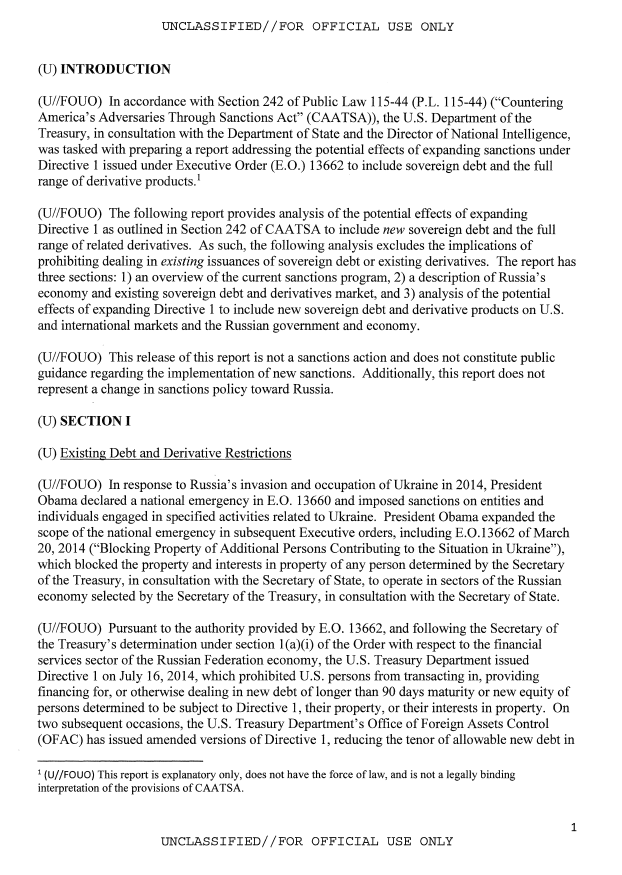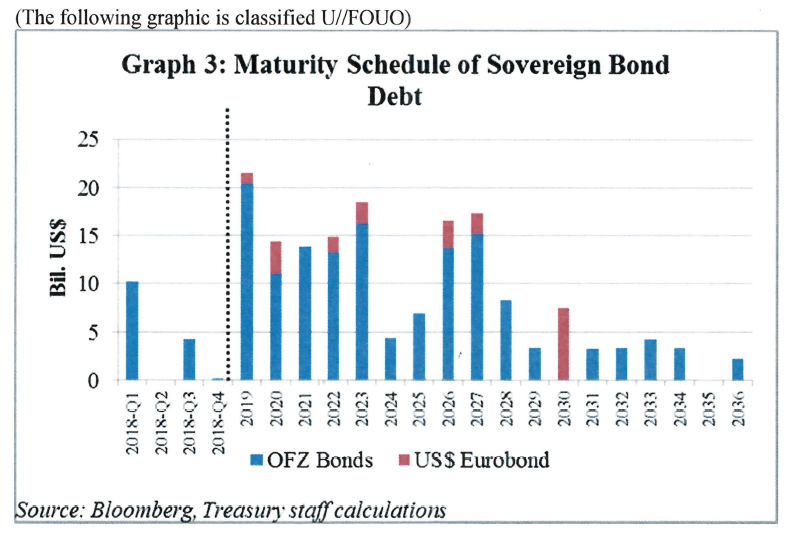(U//FOUO) In accordance with Section 242 of PuЬlic Law 115-44 (P.L. 115-44) (“Countering America’s Adversaries Through Sanctions Act” (CAATSA)), the U.S. Department of the Treasury, in consultation with the Department of State and the Director of National Intelligence, was tasked with preparing а report addressing the potential effects of expanding sanctions under Directive 1 issued under Executive Order (Е.О.) 13662 to include sovereign debt and the full range of derivative products.
(U//FOUO) The following report provides analysis of the potential effects of expanding Directive 1 as outlined in Section 242 of CAATSA to include new sovereign debt and the full range of related derivatives. As such, the following analysis excludes the implications of prohibiting dealing in existing issuances of sovereign debt or existing derivatives. The report has three sections: 1) an overview of the current sanctions program, 2) а description of Russia’s economy and existing sovereign debt and derivatives market, and 3) analysis of the potential effects of expanding Directive 1 to include new sovereign debt and derivative products on U.S. and international markets and the Russian government and economy.
(U//FOUO) This release of this report is not а sanctions action and does not constitute pubic guidance regarding the implementation of new sanctions. Additionally, this report does not represent а change in sanctions policy toward Russia.
…
(U) Russian Derivatives Market
(U//FOUO) The derivatives market in Russia is utilized Ьу banks, large institutional investors (e.g. major western mutual funds, hedge funds, pension funds, and insurance companies), and other corporations to hedge market risks, such as currency and interest rate fluctuations, to hedge against the risk of Russia defaulting on its OFZs and Eurobonds, and to speculate on market movements. According to the Bank for Intemational Settlements (BIS), global banks’ derivative contract exposure to Russian counterparties totaled over $2. 7 billion in the third quarter of 2017, down from $4.3 Ьillion in the third quarter of2016 (а 37 percent decrease) (see ТаЫе 2 below). Although the precise characteristics of these derivative contracts is unclear, the vast majority of these contracts likely reference rubles or Russian interest rates. Reported U.S. derivative exposure to Russian counterparties is also down. U.S. derivative exposure in the third quarter of 2017 totaled $205 million compared to $445 million in the third quarter of 2016, а 54 percent decrease. European derivative exposure has also fallen, reaching approximately $1. 7 Ьillion in the third quarter of 2017, а 33 percent decrease from the third quarter in 2016.
…


